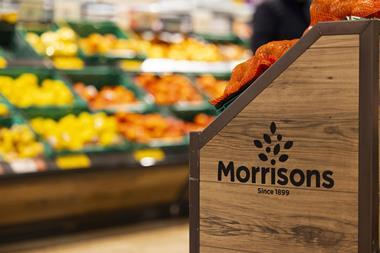
In the so-called ‘attention economy’, every digital experience we have – whether on social media, news platforms or retailer sites – encourages us to spend more time, spend more money or share more of our data.
Increasingly, however, concerns are growing about the ‘dark patterns’ companies use. Ethical questions are being raised about addictive digital behaviour and its impact on the individual. We’ve all seen the stats on digital addiction and its symptoms, which some studies liken to those of drug addiction: anxiety, isolation, depression.
So what does all this have to do with grocery retail? More than you might think. While online grocery shopping is not as obviously addictive as certain social or gaming platforms, retailers are part of the wider digital ecosystem and need to be conscious of how their site designs affect users’ digital and mental health.
Unfortunately, such concerns are rarely priorities for businesses. E-commerce operations tend to measure their success with metrics tied to audience size, conversion rates and revenue. Design is typically determined and led by those core metrics, rather than a more holistic view of the users’ needs.
And yes, there are ‘dark patterns’ evident in online grocery too. The term refers to interface features specifically designed to trick customers into spending more time, money or data than they would otherwise. In grocery, these might include anything from pre-checking boxes for consent (now prohibited under GDPR), hiding delivery costs until the last minute, including a countdown timer for a delivery slot, making it difficult to modify or cancel a subscription, or taking upsell opportunities at the checkout to the extreme.
While these techniques can drive short-term results and boost immediate sales, they have potentially damaging long-term implications for brand loyalty and trust.
Consumers today want to know the impact of their consumption on everything from the environment, to their physical health and increasingly on their mental health and wellbeing. People know that attention is a scarcity, and in response are choosing more consciously to whom to give that attention.
Businesses have a responsibility to design not just for business results, but to consider the impact on the individual and society. It’s not enough to leave it up to the consumer to fight the addictive behaviours digital design often intends to create.
Regulation must also catch up to help protect users. We’re starting to see this with the introduction of GDPR and the proposed DETOUR Act in the US, which introduces a standards body to monitor and limit the use of deceptive design practices for large online platforms, as well as the Social Media Addiction Reduction Technology Act, which targets features like autoplay and endless scrolling, which are designed to keep users on platforms for longer.
In this climate, grocers must start thinking about metrics that are specific to the wellbeing of the user rather than the traditional digital growth metrics. The closest thing widely used today are net promoter or customer satisfaction scores. These are, however, still focused largely on the business rather than the user.
Retailers are starting to consider new success metrics for physical stores tied to experience rather than just sales, and the same needs to happen for online. Businesses must start with understanding their users, their own purpose and values, as well as the different behavioural segments they serve.
Let’s imagine, for example, a busy young mother completing her weekly shop late at night after the kids have gone to bed and with no energy to check what’s still in her cupboards. What if her online grocery experience reminded her she was likely to have certain items in the cupboard already, rather than pushing to upsell items that go wasted? Or instead of blanket promotions of what’s on offer, what if grocers built up better profiles of their users’ lifestyle preferences and only surfaced relevant promotions likely to fit users’ health and wellbeing goals?
Acting responsibly and transparently is the only way to build long-term trust with consumers. This becomes even more critical as new channels and touchpoints like voice or AR emerge and become more dominant.
With even more options for consumers to be connected, it is vital that brands and businesses find a way to support rather than overload them.
Dawn McKerracher, Managing Director at This Place



















No comments yet